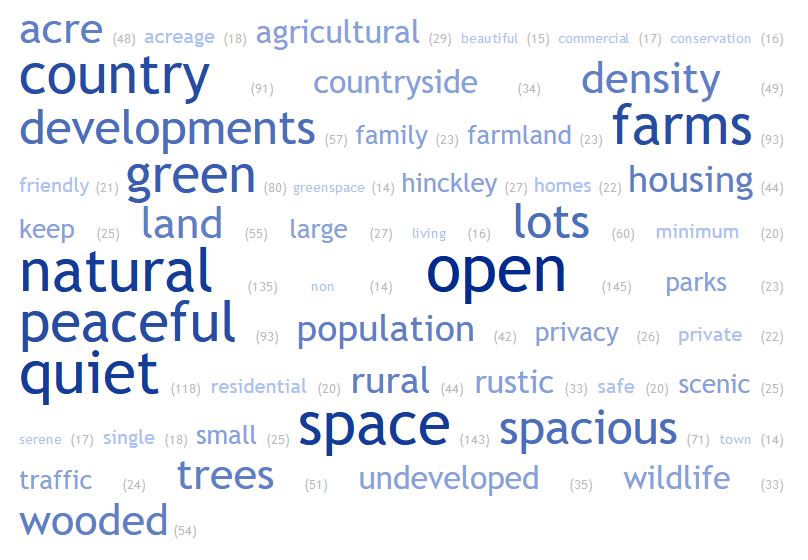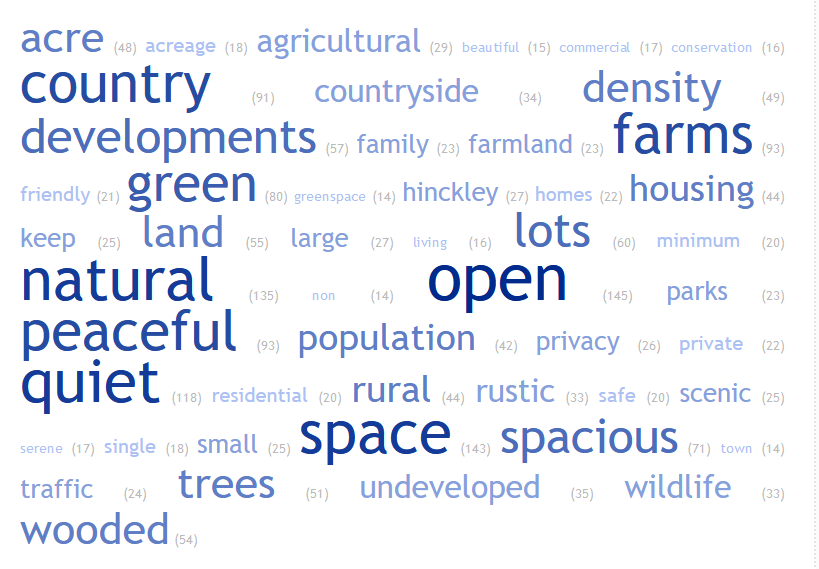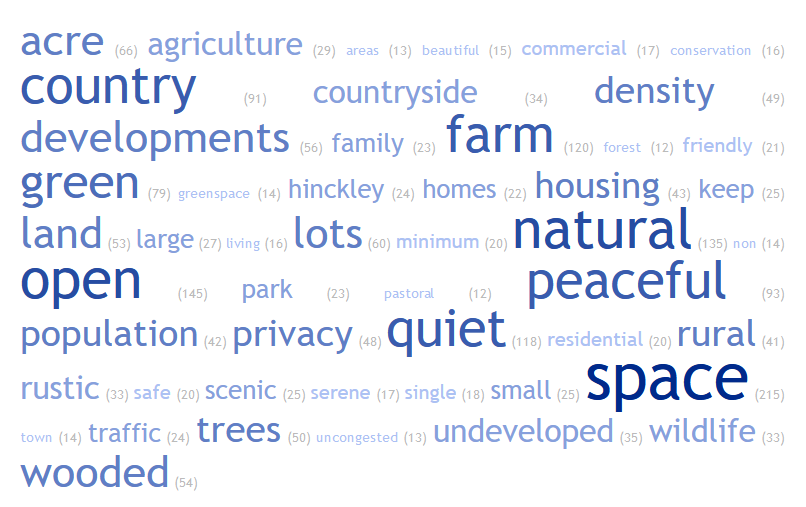What do I think might help keep the township rural? I think we need a combination of changes to the zoning resolution, training for BZA members (possibly even replacing BZA members), and changes to how variances are written.
Zoning changes — Increasing lot size has been discussed, and doing so would certainly would reduce the amount of development. We might want to include minimum green space / maximum total lot coverage in the zoning regulations. Some townships out in Geauga County have looked at such regulations to retain rural character. As currently written, I believe I could transform the entirety of my 2 acre lot into driveway, parking lot, patio, etc. Or just pave the whole thing. Increasing minimum lot widths at the road might ensure homes are placed farther apart, although that might have the unintended consequence of moving some houses closer to the street with neighboring ‘flag’ lots in the rear. Increasing the side yard setbacks would ensure spacing between homes too. Including a slow growth plan — limiting the number of new construction permits per year — could ensure development doesn’t outpace the township’s ability to provide police, fire, and road repair services.
BZA Training — The BZA does not have legal authority to issue variances any time someone finds a zoning regulation inconvenient. Their authority is to issue a variance when strict adherence to zoning regulations deprives the owner of beneficial use of their property. An extreme example — a lot with a bunch of riparian setbacks that mean the buildable area is a 2×40 rectangle toward the front edge of the property. The BZA has the authority to approve a variance from the township’s fairly substantial front yard setback because a 2×40 buildable area has certainly deprived the owner of the ability to have a house on their residential property. Building a house forty feet into the front yard setback lets them have a 40×42 house that’s closer to the road than the zoning regulations stipulate. Building within a riparian setback can destabilize the bank of the stream, so isn’t a good option.
There are several variances where I don’t believe the requestor has shown a “practical difficulty” for area variances. These requests basically amounted to “yeah, I could do it another way … but I don’t want to”. The BZA does not have the legal authority to issue a variance, and I believe these variances would be overturned if challenged in court. That’s a whole process — and you’ve got to own one of the adjoining properties to have standing to challenge it in court. But there’s no reason the BZA should be exceeding its authority in approving variances, and it seems like they need to have what does and does not constitute a practical difficulty or hardship clarified.
Changes to how variances are written — I think variances should be written as restrictively as possible to address the specific problem presented to the Board. If my rear property line is 200′ long, and I want to build a 20×20 garage in the rear yard setback because of some Very Good Reasons, there is no reason for a variance of 20′ from the 50′ rear yard setback. Issuing a non-specific variance means additional, future, construction can also be built 20′ into the rear yard setback. Without having to show any difficulty in building the structure elsewhere — you’ve basically got a lot with a special rear yard setback instead of special permission to build that garage. Write a variance allowing 20′ at the rear of the property to have a 20′ variance from the 50′ rear yard setback. Write a variance allowing the building blueprints presented to the Board to have a 20′ variance.



